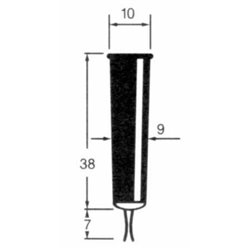As a modeller, but not necessarily an electrician, you may have read many 'how to' articles advising the use of a...
No products
Product successfully added to your shopping cart
There are 0 items in your cart. There is 1 item in your cart.
Search Tips
Christmas and New Year
We are dispatching orders every weekday apart from Christmas Day, Boxing Day and New Year's Day.
If you order is time critical, select next day delivery at checkout.
The shop in Sandown is closed from 25th December, reopening on 30th December.
What do I need to add smoke to my model locomotive?
Adding real smoke to your model locomotive can significantly enhance its appearance, but is it easy to do?
Well, that depends on the amount of space you have to play with inside your bodyshell! When fitting anything inside a model locomotive, space (or the lack of it) is the biggest problem modellers face, especially on smaller scale locos. But if you have a little room to play with, installing a smoke making component is relatively straightforward.
The component that you'll need to install is called a smoke unit (or sometimes a smoke generator). These are readily available from manufacturers such as Seuthe and if you're even half-decent at taking a model apart, you'll have no problems connecting the unit's few wires with the help of the included instructions. You will need to check the unit's recommended operating voltage before you buy as this can vary depending on the unit's intended use and can be lower for ships or higher for buildings, so make sure yours is suitable for model railway locomotives.
Once installed, a few drops of smoke oil down your loco's chimney into the smoke generator is all that's needed to get you steaming down the track. A word to the wise though, too much oil will fail to vaporise and no smoke will be produced, so reading the instructions carefully is well advised.
Click here to receive the tips weekly in your mailbox. You can unsubscribe at any time.










